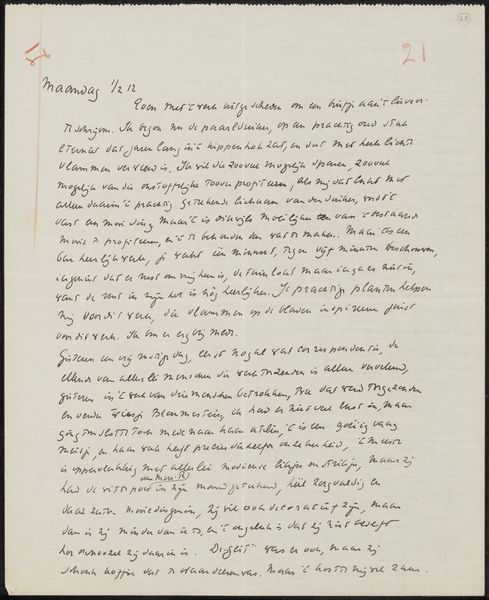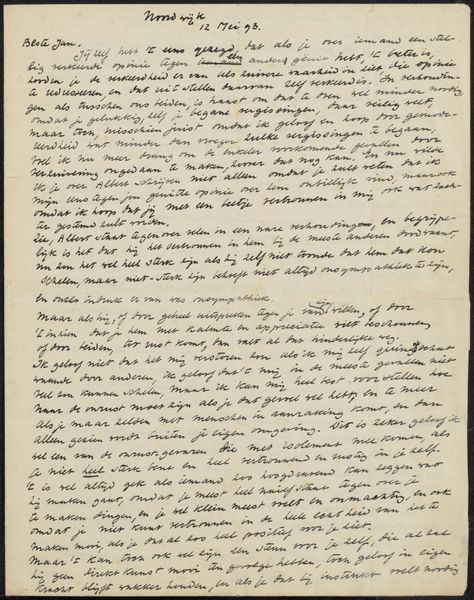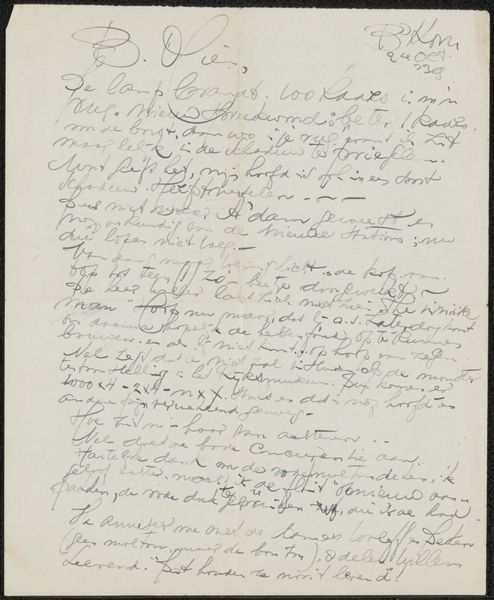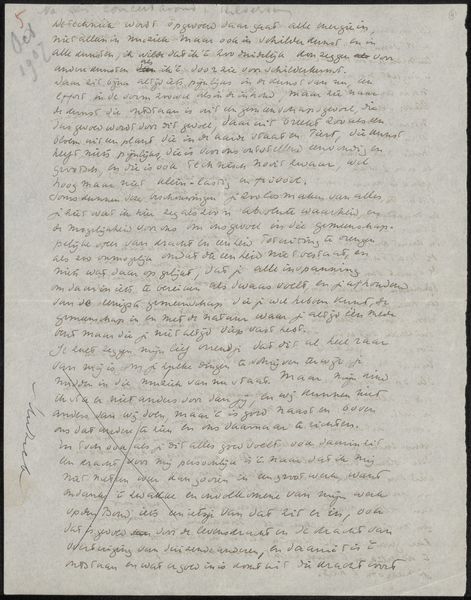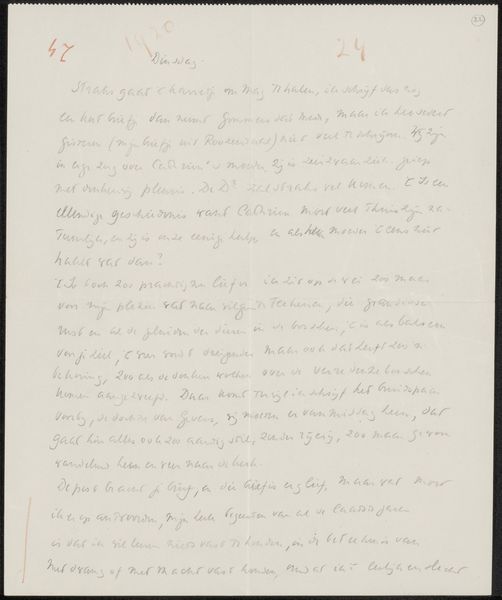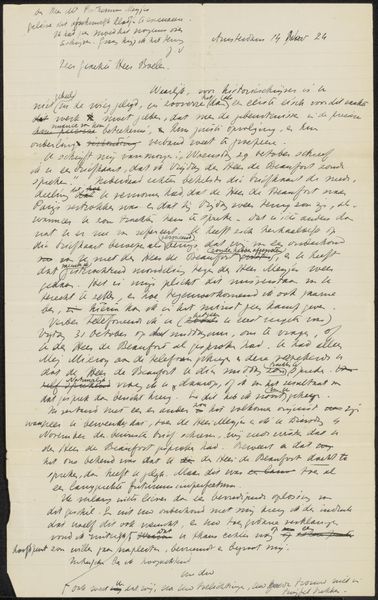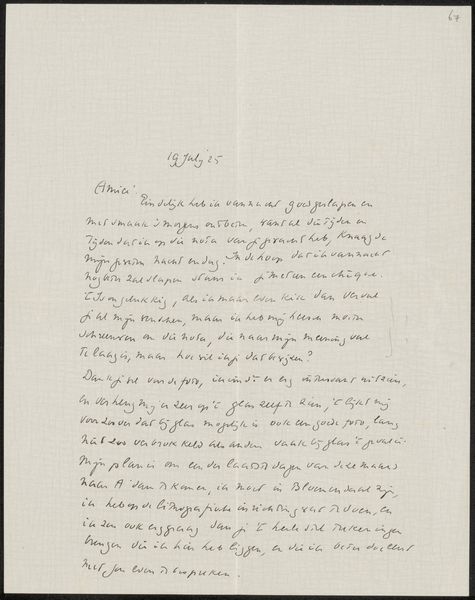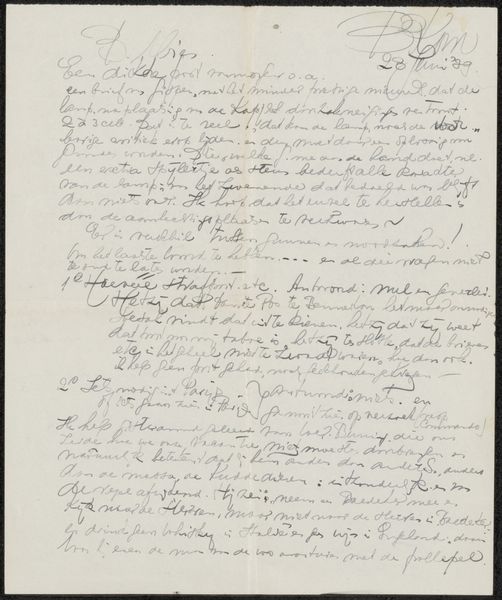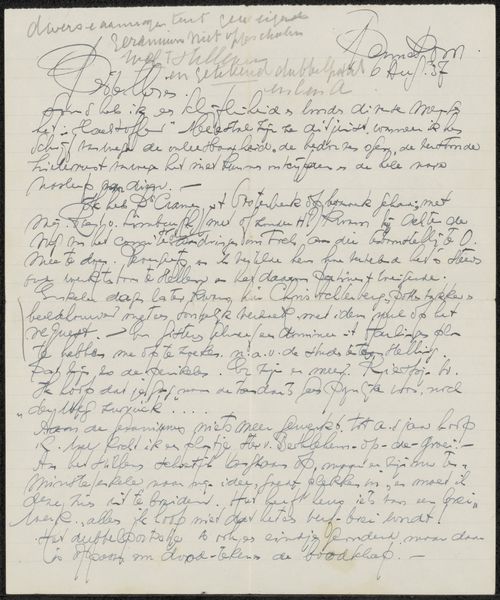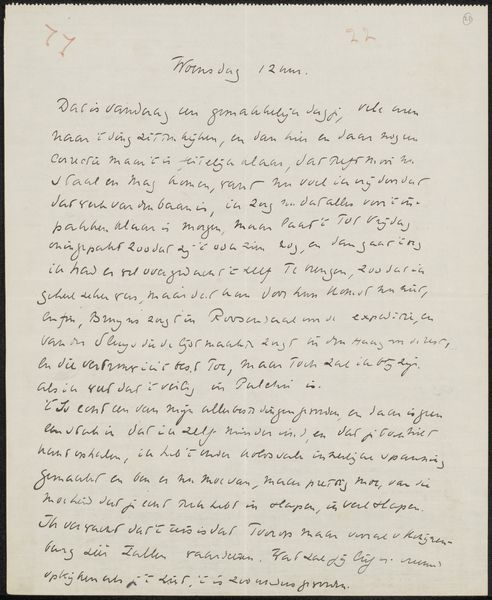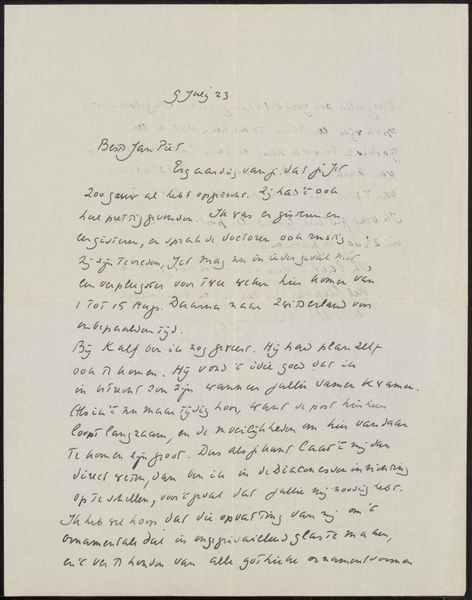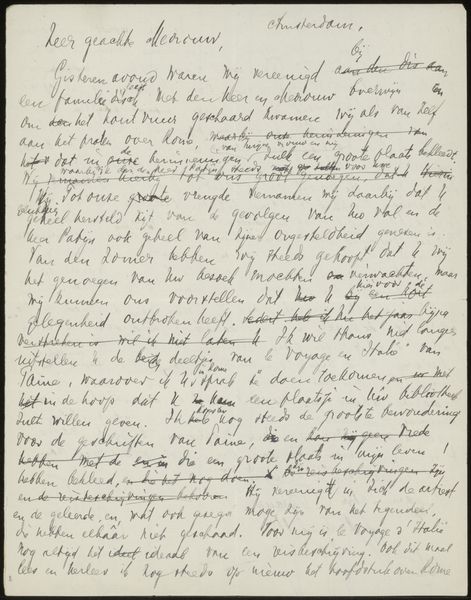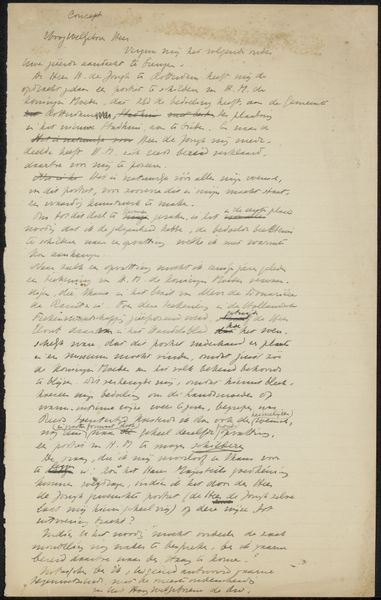
Brief aan Ina van Eibergen Santhagens-Waller c. 1878 - 1938
0:00
0:00
richardnicolausrolandholst
Rijksmuseum
drawing, paper, ink, sculpture, pen
#
portrait
#
drawing
#
paper
#
ink
#
sculpture
#
pen
#
calligraphy
Copyright: Rijks Museum: Open Domain
Curator: Today, we’re looking at "Brief aan Ina van Eibergen Santhagens-Waller," a letter by Richard Nicolaüs Roland Holst, dating from around 1878 to 1938. It’s currently held at the Rijksmuseum. It’s an ink drawing made with pen on paper. Editor: The letter immediately strikes me as intimate yet elusive. The script is dense and hurried. It gives off a real sense of immediacy, like a thought captured just as it spills from the mind. Curator: Absolutely. Holst's choice of simple pen and ink underscores the personal nature of correspondence. We see the physical labor involved, the careful strokes forming each character. It highlights the artist's hand and emphasizes the material presence of the communication process itself. There’s no mediated production—just raw expression through available materials. Editor: Considering Holst’s social circles, I'm curious about the nature of the relationship between Holst and Ina van Eibergen Santhagens-Waller, the letter's addressee. Letters were crucial for maintaining social bonds and exchanging ideas. Was she a muse, a colleague, or a confidante? How does her position and standing inform what's left unsaid or alluded to in the visible text? Curator: That's precisely it—we’re left to infer based on this tangible trace. Holst was deeply involved in socialist circles, so this correspondence likely connects to discussions surrounding social change. The handwriting itself speaks to his background, doesn't it? The looping script resembles practiced calligraphy, a skill attained through a formal education, and is here implemented for perhaps an informal situation, allowing it to bridge boundaries between "high" art and daily practice. Editor: The fact that this letter has survived speaks volumes, doesn't it? Its existence in a museum implies an understanding of Holst within an institutional framework that can give credence to personal effects and records—allowing viewers access to historical networks defined through these writings. I can't help but consider what is ultimately revealed or concealed within private communications now displayed publicly. Curator: Well, looking at it this way provides the grounds to revisit that relationship—it allows one to look at art not as divorced from life, but emerging precisely out of it, with material and networks equally important. Editor: Indeed, by analyzing it through Holst's time we get a new and rich experience from a piece of paper.
Comments
No comments
Be the first to comment and join the conversation on the ultimate creative platform.
